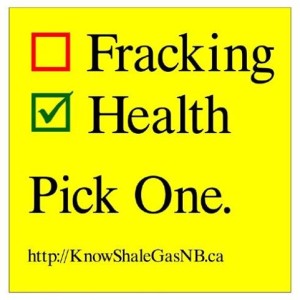Mel Strickland argues, regulation won’t mitigate the inherent risks – only a full ban can protect us.
Fracking – a Health Warning
What is fracking?
Hydraulic fracturing (‘fracking’) is a form of ‘extreme energy’ which involves drilling deep into the ground and forcing down millions of gallons of water, chemicals and sand at high pressure to literally smash the rock and force the gas (or oil), to the surface. It is a controversial technique which has been extensively used in the US and in Australia. Fracking was banned in France in 2011 – the ban was upheld by the French constitutional court in 2013, following a challenge by a US energy company. It is also banned in other parts of the world including in some parts of the US and Canada.
Fracking in UK
In the UK, fracking has only taken place at one site to date – Lancashire. The company who undertook the frack was Cuadrilla Resources. This caused two earthquakes of magnitude 2.3 and 1.5 in spring 2011, as reported by the British Geological Society.1 The British Geological Society notes: “It is well-established that fluid injection can induce small earthquakes. Typically, these are too small to be felt.” Cuadrilla has previously estimated that the shale gas reserves in Lancashire alone have a market value of £136bn.2
Health risks
Some of the risks associated with fracking which will impact on health include:
Methane and carbon pollution, and their contribution to climate change
Contamination of groundwater and soil
Air pollution impacts
Exposure to toxic chemicals
Waste disposal – fracking creates a legacy of large volumes of contaminated (and radioactive) fracked fluid
Large volume water use, often transported into communities with lorries, greatly increasing traffic flows, particularly in water-stressed regions
Fracking-induced earthquakes
Workplace safety –for example through exposure to chemicals and inhaling silica dust (sand) – which can cause lung disease and other health problems – as stated by the US National Institute for Occupational Safety and Health 3
Blowouts due to gas explosion
Infrastructure degradation, including problems with the integrity of the wells
Specific health impacts
A study by the Tyndall Centre at the University of Manchester published in January 2011 found that fracking “pose[s] significant potential risks to human health and the environment.” 4 A more recent study entitled ‘The Health Implications of Fracking’ published in The Lancet on 1 March 2014 stated: “findings suggest that this form of extraction might increase health risks compared with conventional oil and gas wells because of the larger surface footprints of fracking sites; their close proximity to locations where people live, work, and play; and the need to transport and store large volumes of materials.” 5
Recent studies in the US have also found that communities near to fracking sites are at higher risk of infertility, having children with birth defects, and developing certain cancers because of endocrine disrupting chemicals (EDCs) used in the fracking process. 6 EDCs are particularly damaging to children. The same study noted the adverse health impacts on wildlife located near fracking sites – including respiratory, gastrointestinal, dermatologic, neurologic, immunologic, endocrine, and reproductive problems. Another US study, unsurprisingly, found that the adverse health impacts increase the closer people are to a fracking site. 7 This is of particular concern in the densely populated UK.
Climate change, fracking and health
Fracking for fossil fuel will accelerate climate change and therefore will increase detrimental health impacts associated with climate change such as cancer, cardiovascular and respiratory problems. 8 Public health registrars, writing in The Lancet, recently criticised Public Health England for excluding climate change from their health analysis of fracking. 9 Furthermore, investing in unconventional methods of fossil fuel extraction like fracking is likely to divert money away from the development of cleaner, renewable energy infrastructure. As the Tyndall study states: “Rapid carbon reductions require major investment in zero-carbon technologies and this could be delayed by exploitation of shale gas.” Fracking is likely to lock us into high-carbon infrastructure for decades.
Groundwater contamination
Fracking involves forcing huge volumes of water mixed in with chemicals and sand into the ground, through concrete-cased wells, below the water table. Groundwater can become contaminated at every stage of the extraction process – for example spillage during transport of chemicals before and after extraction, the drilling and fracturing process itself, well bore/ casing failure, during the fracked fluid disposal process, and from abandoned wells. This can contaminate precious drinking water supplies and soil that people rely on for food crops.
For all these reasons, fracking must be considered to be an inherently harmful activity that must be banned in the public interest, not regulated. As Dr Carey notes in her article ‘Coal Seam Gas: Future Bonanza or Toxic Legacy’:
“While the industry calls for definite proof of health effects, as with tobacco and asbestos, by the time evidence is iron-clad, damage may be well underway. We need to act to prevent serious impacts.” 10
1 See: http://earthquakes.bgs.ac.uk/research/events/BlackpoolMay2011.html
2 See http://www.bbc.co.uk/news/uk-england-lancashire-21296679
3 See: http://www.cdc.gov/niosh/updates/upd-03-18-14.html
4 See: ‘Shale gas: a provisional assessment of climate change and environmental impacts’ http://tyndall.ac.uk/sites/default/files/tyndall-coop_shale_gas_report_final.pdf
5 See: ‘The Health Implications of Fracking’ http://download.thelancet.com/pdfs/journals/lancet/PIIS0140673613627002.pdf?id=iaaiCT7nImzyb4B0_hrAu
6 See: ‘Estrogen and Androgen Receptor Activities of Hydraulic Fracturing Chemicals and Surface and Ground Water in a Drilling-Dense Region’ http://medicine.missouri.edu/news/docs/en.2013-1697.full.pdf
7 See: ‘Human health risk assessment of air emissions from development of unconventional natural gas resources’ http://cogcc.state.co.us/library/setbackstakeholdergroup/Presentations/Health%20Risk%20Assessment%20of%20Air%20Emissions%20From%20Unconventional%20Natural%20Gas%20-%20HMcKenzie2012.pdf
8 See: ‘Climate Change, Health Impacts and Opportunities’ http://www.medact.org/wp-content/uploads/2014/04/medact_climatescience_Briefing2_Web.pdf
9 See: Correspondence, Shortage of public health independence and advocacy in the UK http://download.thelancet.com/pdfs/journals/lancet/PIIS0140673614600647.pdf?id=iaaiCT7nImzyb4B0_hrAu
10 See: ‘Coal Seam Gas: Future Bonanza or Toxic Legacy?’ http://dea.org.au/images/general/viewpoint_issue_8_CSG.pdf

